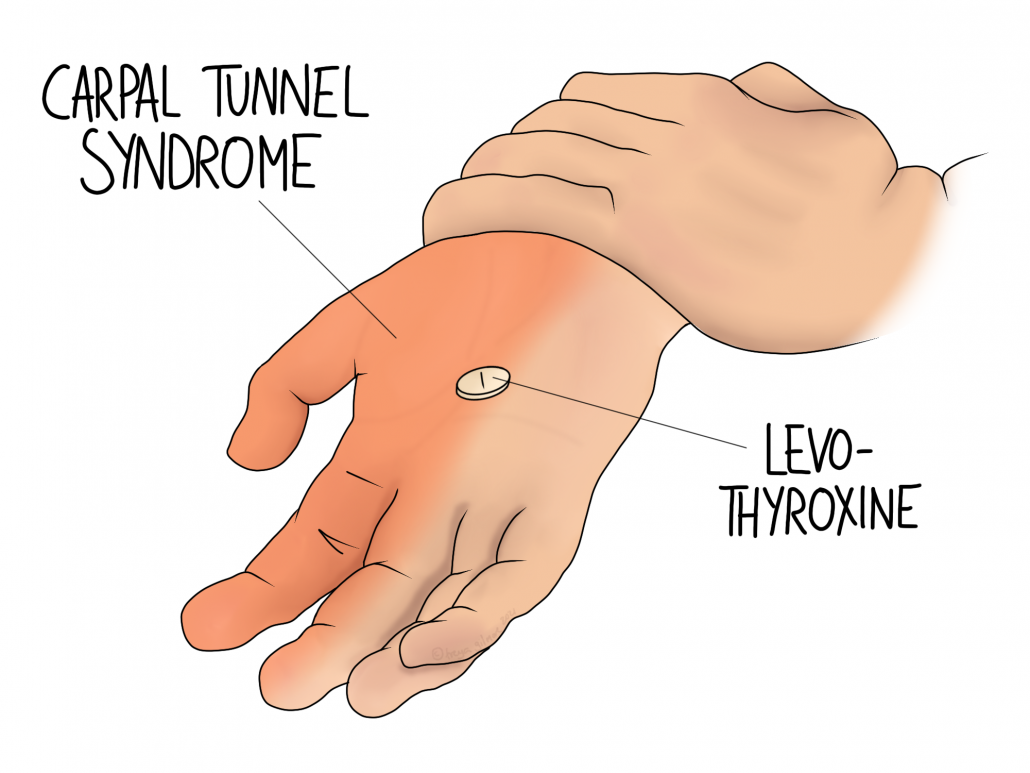There are countless factors in play when we experience pain. Beyond the basics of the painful stimulus and our previous experience with similar feelings, sensation is affected by physiology. One aspect of this that we are learning more about is hormones. Hormones are signalling chemicals. They include chemicals like insulin, oestrogen, and testosterone.

Thyroid Hormones
Having high or low levels of thyroid hormones can affect pain. When levels are low, it is known as hypothyroidism. Alongside a sensitivity to cold, hypothyroidism can come with nerve irritation. For things like carpal tunnel syndrome, this can be explained by fluid retention associated with the low levels of thyroid hormones. The development of pins and needles like this should be considered a warning sign. Prolonged irritation of nerves can lead to chronic nerve pain even after the irritant has been removed. If you suspect that you may have hypothyroidism, your GP can organise a blood test to diagnose it.
Hyperthyroidism is when the levels are higher than normal. This too is associated with a rise in pain levels. General sensitivity to pain increases, especially to pain caused by something very hot or cold.
Sex Hormones and Pain
Pain levels are generally reported higher in post-menopausal women than pre-menopausal women. As always, there will be a lot of factors at play here, but hormonal ones should be considered. Oestrogen levels drop during the menopause, and this is responsible for a number of associated symptoms.
Oestrogen can be considered the opposite hormone to testosterone, although women do have both in circulation. One study showed that people with higher levels of testosterone were less likely to develop aches and pains associated with their desk work. The exact explanation is unknown, and likely more complex than hormones alone. The same paper investigated the recovery from sciatic nerve injury in mice. Recovery was quicker and more complete in male mice than female. Mice with higher oestrogen levels were also more susceptible to pain in general.
This means that both higher levels of oestrogen, and low levels during the menopause are both associated with more pain.
Beyond Pain Processing: Hormones and Injury
The drop in oestrogen apparent in the menopause is associated with a reduction in bone density. Post-menopausal women are at the highest risk of developing osteoporosis or osteopenia. Low bone density increases the risk of fracture, thus increasing the risk of pain. Similarly, collagen production slows as oestrogen drops too. This means that soft tissues become less elastic, and muscle or tendon ruptures are more common.
Osteopathy and Pain Management
Although we can’t affect your hormone levels, we can help manage your pain in other ways. The body is highly adaptable, and one of the best things you can do to help maintain bone density is exercise. Your osteopath can help develop a suitable exercise plan with the aim of reducing your risk of osteoporosis and fractures. Similarly, tendons that are well exercised are more resilient than those that are not. If you struggle with exercise because of aches and pains, we can help here too.
For nerve pain in patients with underactive thyroids, we can help to manage symptoms in the short term. By encouraging retained fluid to move away from the points where problems are caused, we can minimise the symptoms of things like carpal tunnel syndrome.
Book an osteopathy appointment to manage your pain in Alsager here.
